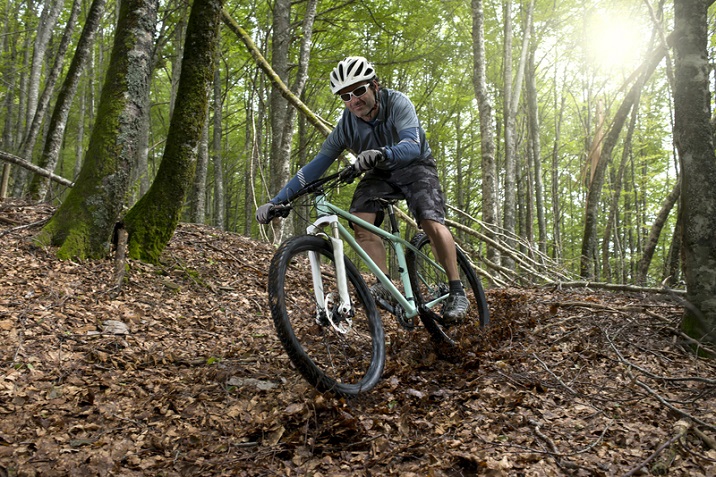
- Mountain Biking - Home
- Mountain Biking - Overview
- Mountain Biking - Types of Bikes
- Mountain Biking - Equipment
- Mountain Biking - Trails
- Cross Country Biking
- Mountain Biking - Downhill Biking
- Mountain Biking - Dirt Jumping
- Mountain Biking - Free Riding
- Mountain Biking - Trail Riding
- Mountain Biking - Rules
- Mountain Biking - Champions
Mountain Biking - Types of Bikes
These bikes are specially designed for the use in mountain biking. The special features provide improved durability as well as performance in rough terrains. The tires used in these bikes have a predefined track and are mounted on rims that are far stronger than non-mountain bike rims.
Suspensions − All modern mountain bikes have suspensions, tires with diameters 26 inch, 27.5 inch or 29 inch and 1.7 to 2.5 inch width and a rising and flat handlebar which gives the rider more control over the bike.
Brakes − Mountain bikes also use hydraulic disk brakes which are more powerful than normal brakes. They also have low ratio gears which help the bikers passing steep hills as well as obstacles. As compared to normal bikes, mountain bikes have smaller rims.
Pedals − The kind of pedal used in this kind of bikes are also different from normal bikes where the pedals are designed for the special kind of shoes that are used by the bikers in mountain biking and those shoes really fit in those pedals which provide an amazing biking experience.
Based on the use of suspension, there are four types of bikes −
Rigid − A frame with rigid form and no suspension.
Hard tail − A frame with front suspension fork but no rear suspension.
Soft tail − A frame with some amount of rear suspension.
Dual or full Suspension − A frame with both front and rear suspensions
Based on the types of mountain biking and the type of terrains, different kinds of bikes are designed.
Cross-Country Bikes
Cross-country mountain bikes are primarily made for cross country racing. In case of cross country, the biker needs to climb more and more speed and endurance is also required because of which the bikes made for this kind of biking are lightweight and quite efficient.
In early days, hard tail bikes were used in cross-country bikes, but nowadays, full suspension bikes with lightweight aluminium frames are been used.
Trail Bikes
Trail bikes are very much similar to that of cross country bikes which are built exclusively for bikers mostly riding at Trail centres. They also have around 11 to 15 kg weight with geometries slightly slacker than cross country bikes. They usually are built to handle rougher terrains than cross country bikes.
Enduro / All Mountain Bikes
All mountain bikes are a combination of cross country as well as free ride bikes. With weight between 13 kg to 16 kg, they feature travels with great suspension level of 6 to 7 inch and are designed to climb as well as descend well.
Downhill Bikes
Downhill bikes have more suspension level than AM bikes, i.e. around eight or more inches of suspension at both front and rear travel and are made of strong but lightweight materials like carbon fibre and with weight mostly below 18kg.
With typically high gears and slack geometry angles, they are mostly made for downhill biking as well as racings. Because of their high speed nature, they mostly have one chain ring with a large bash guard and a chain guide.
Free Ride Bikes
Free ride bikes are very much similar to downhill bikes where more emphasis is given on the strength of the cycle rather than the weight. These bikes typically weigh around 14 to 20 kg. The bikes have longer durability and are often too heavy. They have suspensions of around 7 inches and are not ideal for mountain climbing because of their heavy weights.

Dirt Jumping Bikes
Dirt jumping bikes have a strongly built frame with 4 to 6 inches front suspension and a rear suspension that can be either between 3 to 4 inches. The bike comes with almost nine gears. They mostly use 24-26 inches fast rolling tires, which is ideal for this terrain and have low seat posts and overly sized handlebars.